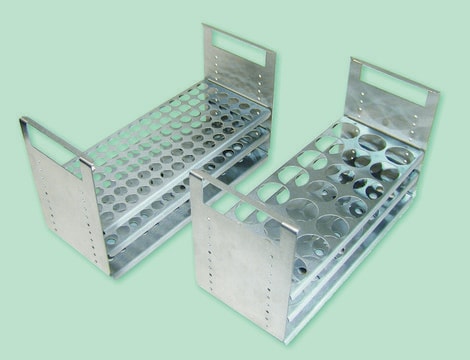일반 설명
We are committed to bringing you greener alternative products, which adhere to one or more of The 12 Principles of Green Chemistry.This antibody is Preservative-free, produced without the harm or sacrifice of animals and exceptionally stable to allow for ambient shipping and storage if needed and thus aligns with "Waste Prevention", "Designing Safer Chemicals" and "Design for Energy Efficiency".
Click here for more information.
ZooMAb® antibodies represent an entirely new generation of recombinant monoclonal antibodies.Each ZooMAb® antibody is manufactured using our proprietary recombinant expression system, purified to homogeneity, and precisely dispensed to produce robust and highly reproducible lot-to-lot consistency. Only top-performing clones are released for use by researchers. Each antibody is validated for high specificity and affinity across multiple applications, including its most commonly used application. ZooMAb® antibodies are reliably available and ready to ship when you need them.
특이성
Clone AHN-17 is a ZooMAb® Mouse recombinant monoclonal antibody that specifically detects MRP-8/MRP-14 (Protein S100-A8/9).
애플리케이션
Quality Control Testing
Evaluated by Immunohistochemistry (Paraffin) in human tonsil tissue sections.
Immunohistochemistry (Paraffin) Analysis: A 1:100 dilution of this antibody detected MRP-8/14 in human tonsil tissue sections.
Tested applications
Affinity Binding Assay: A representative lot of this antibody bound recombinant human MRP-8/14 protein with a KD of 8.7 x 10-6 in an affinity binding assay.
Enzyme Immunoassay Analysis (ELISA): Serial dilutions from a representative lot detected recombinant human MRP-8/14.
Immunocytochemistry Analysis: A 1:100 dilution from a representative lot detected MRP-8/14 in HL-60 cells.
Note: Actual optimal working dilutions must be determined by end user as specimens, and experimental conditions may vary with the end user
Evaluated by Immunohistochemistry (Paraffin) in human tonsil tissue sections.
Immunohistochemistry (Paraffin) Analysis: A 1:100 dilution of this antibody detected MRP-8/14 in human tonsil tissue sections.
표적 설명
Protein S100-A8/9 (UniProt: P05109/ P06702; also known as MRP-8/MRP-14, Leukocyte L1 complex light chain/ Leukocyte L1 complex heavy chain, p8/p14, S100 calcium-binding protein A8/A9) are encoded by the S100A8/S100A9 (also known as MRP8/MRP14) genes (Gene ID: 6279/6280) in human. MRP-8 and MRP-14 are calcium- and zinc-binding proteins that play a prominent role in the regulation of inflammatory processes and immune response. They are known to induce neutrophil chemotaxis and adhesion. They are predominantly found as calprotectin and perform a variety of intra- and extracellular functions. Their intracellular functions include facilitating leukocyte arachidonic acid trafficking and metabolism, modulation of the tubulin-dependent cytoskeleton during migration of phagocytes, and activation of the neutrophilic NADPH-oxidase. They are known to activate NADPH-oxidase by facilitating the enzyme complex assembly at the cell membrane. MRP-8 contributes to the enzyme assembly by directly binding to NCF2/P67PHOX. Its extracellular functions include proinflammatory, antimicrobial, oxidant-scavenging and induction of apoptosis. MRP-14 is reported to induce neutrophil chemotaxis and adhesion and can increase the bactericidal activity of neutrophils by promoting phagocytosis via activation of SYK, PI3K/AKT, and ERK1/2 pathways and can induce degranulation of neutrophils by a MAPK-dependent mechanism. MRP-8 and MRP-14 also acts as danger associated molecular pattern (DAMP) molecules and stimulate innate immune cells via binding to pattern recognition receptors such as Toll-like receptor 4 (TLR4) and receptor for advanced glycation end (AGER) products. They also play an impotent role as oxidant scavengers and have a protective role in preventing exaggerated tissue damage by scavenging oxidants. This ZooMAbZooMAb® recombinant monoclonal antibody, generated by our propriety technology, offers significantly enhanced specificity, affinity, reproducibility, and stability over conventional monoclonals. (Ref.: Atallah, M., et al. (2012). PloS One. 7(2); e29333; Nakatani, Y., et al. (2005). Mediators Inflamm. 2005(5); 280-292; Ryckman, C., et al. (2003). J. Immunol. 170(6); 3233-3242).
물리적 형태
Purified recombinant mouse monoclonal antibody IgG, lyophilized in PBS, 5% Trehalose, normal appearance a coarse or translucent resin. The PBS/trehalose components in the ZooMAb formulation can have the appearance of a semi-solid (bead like gel) after lyophilization. This is a normal phenomenon. Please follow the recommended reconstitution procedure in the data sheet to dissolve the semi-solid, bead-like, gel-appearing material. The resulting antibody solution is completely stable and functional as proven by full functional testing. Contains no biocide or preservatives, such as azide, or any animal by-products. Larger pack sizes provided as multiples of 25 μL.
재구성
300 μg/mL after reconstitution at 25 μL per vial. Please refer to guidance on suggested starting dilutions and/or titers per application and sample type.
저장 및 안정성
Recommend storage of lyophilized product at 2-8°C; Before reconstitution, micro-centrifuge vials briefly to spin down material to bottom of the vial; Reconstitute each vial by adding 25 μL of filtered lab grade water or PBS; Reconstituted antibodies can be stored at 2-8°C, or -20°C for long term storage. Avoid repeated freeze-thaws.
법적 정보
ZooMAb is a registered trademark of Merck KGaA, Darmstadt, Germany
면책조항
Unless otherwise stated in our catalog or other company documentation accompanying the product(s), our products are intended for research use only and are not to be used for any other purpose, which includes but is not limited to, unauthorized commercial uses, in vitro diagnostic uses, ex vivo or in vivo therapeutic uses or any type of consumption or application to humans or animals.








